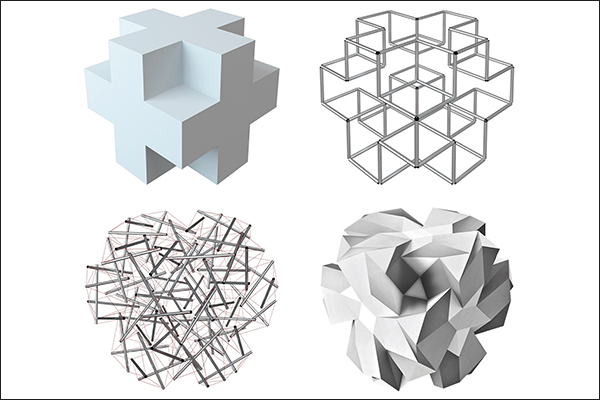Evoluzioni morfologiche di transpoliedri. Eloquenza delle immagini per generare strutture tensegrali
DOI:
https://doi.org/10.15168/xy.v2i3.63Abstract
L’immagine, come ben mostra l’attività di ricerca artistica di Lucio Saffaro, può essere intesa come rappresentazione visiva di concetti complessi, tema palesemente utile in ambito architetto- nico ed ingegneristico. La costruzione di soluzioni strutturali innovative nasce anche dall’evolu- zione grafica di forme semplici. È il caso delle strutture tensegrali, che nascono dal movimento di aste poliedrali. Senza il supporto grafico, è difficile anche solo capire cosa sia una tensegrity, definibile «come un sistema in uno stato di auto–equilibrio stabile comprendente una serie di componenti compressi all’interno di un continuum di componenti tesi». Analizzando tale asserto, si possono identificare i “componenti compressi” come le aste presenti all’interno del siste- ma, mentre i “componenti tesi” sono costituiti dalla rete di tiranti che collegano ogni elemento creando appunto il continuum. La costruzione di tali sistemi è possibile tramite processi geome- trici a partire da ogni tipo di poliedro, sia esso regolare, semiregolare o catalano: tale processo geometrico è un insieme di rotazioni e traslazioni, a cui segue il collegamento fra cavi e aste per fornire la corretta ridistribuzione delle tensioni. L’evoluzione morfologica dei poliedri passa per le configurazioni poliedriche intermedie, detti transpolyhedra. La struttura tensegrale, secondo il processo geometrico sopra descritto, è totalmente inscrivibile all’interno di questi solidi e fra essi sussistono quindi svariate relazioni geometriche: scomponendo il poliedro in figure rego- lari è possibile riconoscere il numero delle aste della struttura tensegrale, il numero di cavi, le geometrie al nodo e avere una mappatura delle connessioni fra le stesse. Il disegno del poliedro non si limita quindi alla rappresentazione della volumetria occupata, ma costituisce un numero significativo di informazioni riguardanti la struttura tensegrale corrispondente.


